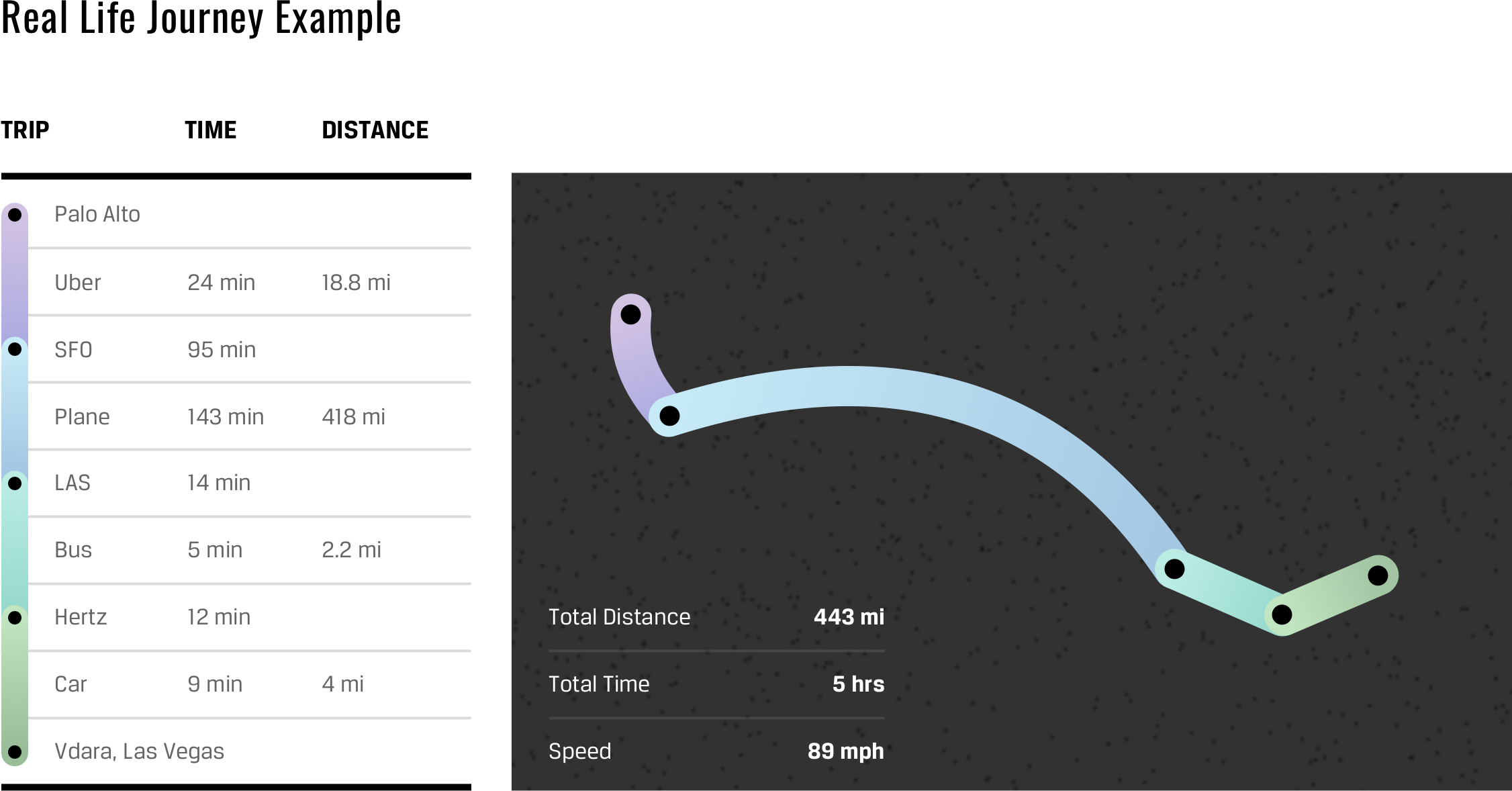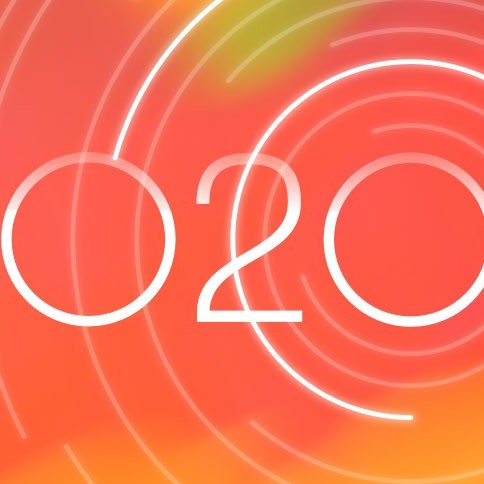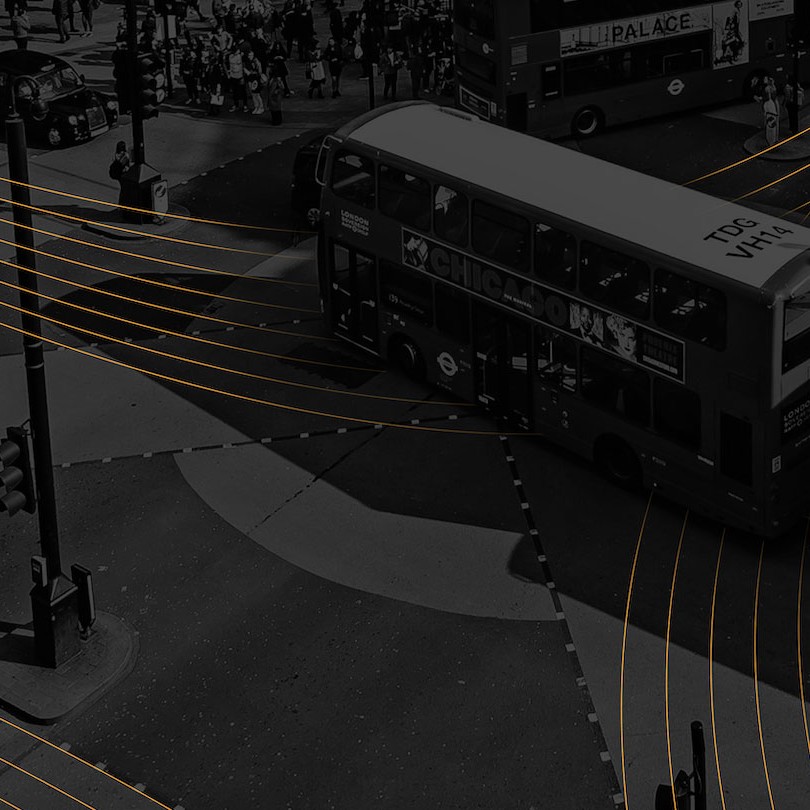As the mobility landscape evolves, we envision its future to design experiences for what’s to come.
The state of the mobility landscape is one of evolution and impending revolution. Change is coming from all directions with new competition from big technology companies and small startup players. Rising consumer expectations and emerging technologies like electrification, connectivity, autonomy, and a variety of user interface advancements are challenging the status quo. Shifting attitudes and behaviors around ownership, sustainability, and urbanization are inspiring novel alternative forms of transport from autonomous shuttles and high-speed trains to supersonic planes and suborbital spacecraft. With all this change, how can we know what to expect from mobility experiences in the future?
At Punchcut, we face the challenges of designing for an uncertain future every day, and we like to begin with research. While technology and circumstance are constantly changing, basic human needs are relatively steadfast, and there’s no better way to uncover and unpack user needs than primary research. To better understand the current state of mobility, we decided to test ourselves. We invited Punchcut employees to activate the Google Timeline feature to capture data about our mobility patterns over the course of a few months’ time, including typical weekly behavior and holiday breaks. We cataloged, synthesized, and discussed our movement patterns to extrapolate a bigger picture of current travel behavior, and while our sample size is relatively small and admittedly homogeneous, it illustrates the type of research and data collection that mobility-minded technology companies will be performing on a massive scale. We complemented this work with secondary desk research on market and technology trends to understand the trajectory of change, and arrived at a set of insights that capture our perspective on the future of mobility experiences.

Insight 1
There are three basic types of travel: the jaunt, the commute, and the journey.

Insight 1
There are three basic types of travel: the jaunt, the commute, and the journey.
Jaunts, Commutes & Journeys
We identified three basic categories of travel: the jaunt, the commute, and the journey. These trips range from short to long—both in distance and duration—and represent a range of qualities from private to shared, active to passive, frequent to infrequent, and planned to unplanned. They utilize multiple forms of transport to varying degrees and arise from a range of common motivations. These three categories help us understand the current mobility landscape and represent key areas of opportunity for future innovation.




The Jaunt
Jaunts are short, quick trips of less than 10 miles, under an hour in duration. They’re the most frequent category of trips and are more likely to be spontaneous. Most jaunts utilize active, personal forms of transport like walking, biking, and car travel, but may also include short bus and ridesharing trips. Jaunts are motivated by dining, shopping, errands, exercise, and social activities, and they may be solitary or social, including family, friends, coworkers, or pets. These short trips may seem insignificant in the larger spectrum of mobility, but there’s been a lot of activity in this space. A slew of new forms of personal transport have cropped up utilizing electric power and gyroscopic stabilization from companies like Segway and Inmotion. And new ridesharing players keep emerging utilizing bikes, scooters, and cars from companies like GoBike, Jump, Scoot, Uber, Lyft, Via, and Juno. Nothing seems to beat the bike for socially acceptable personal transport, but until we all get jetpacks, there will continue to be new attempts.
The Commute
Commutes are mid-size trips of less than 100 miles, under 3 hours in duration. They account for the majority of travel time and occur regularly within expected windows. Commutes utilize a variety of transport modes including active, personal forms like walking, biking, and car travel, as well as more passive, shared forms like bus and train travel. Most commutes are about getting to and from work, but may incorporate other goals along the way, and they tend to be lonely, either solitary or with strangers. Due to their frequency and duration, commutes may represent the greatest potential for broad impact to people’s lives through innovation. Companies like Chariot, Cabin, Proterra, and Navya are already trying to change the face of public transit through sharing, electric power, autonomy, and service design, and personal autonomous vehicles are being developed by traditional car companies and emerging players like Tesla, Waymo, Uber, and Lyft. Additionally, new forms of high-speed rail and vactrain concepts based on the hyperloop model from companies like Virgin Hyperloop One, HTT, Arrivo, TransPod, and the Boring Company have the potential to revolutionize the speed and scope of the commute.
The Journey
Journeys are long trips up to 10,000 miles and 20 hours in duration. They are infrequent and highly planned. Journeys utilize mostly passive, shared forms of transport like ridesharing, bus, train, and plane travel, but may also include personal or rental car travel. Most journeys are motivated by vacation, work, and visiting family, as well as seasonal or more permanent migratory travel. Journeys may be solitary or with immediate family or close friends, in addition to strangers. While these trips are infrequent, they may represent the biggest opportunity for disruption given their extended duration and the current level of inefficiency in air travel. Innovation in this space is coming from traditional players like Boeing and Airbus, as well as new concepts for supersonic and suborbital travel from companies like Boom, SpaceX, Virgin Galactic, and Blue Origin.

Insight 2
Emerging forms of transit will increase speed, expand range, and reduce travel time.

Insight 2
Emerging forms of transit will increase speed, expand range, and reduce travel time.
Future Forms
A variety of emerging forms of mobility promise to drastically increase the average speed of transit. Autonomous vehicles in synced formations and new high-speed trains could reach speeds of 200 mph or more. Vacuum tube trains rely on low friction and relatively little power using magnetic levitation, compressed air, and electromagnetic fields to reach average speeds of 600 mph, and could theoretically travel many times faster. Supersonic planes may see a resurgence with average speeds over 1400 mph, and Elon Musk has proposed using SpaceX’s BFR to carry passengers on suborbital spaceflights anywhere on Earth in under an hour. These new forms of travel could reshape the way we think about distance. Our mental model of distinct jaunts, commutes, and journeys goes out the window when jaunts and journeys take the same amount of time. You could theoretically go on vacation across the world in the time it takes to pick up dinner, or taken another way, go pick up dinner on the other side of the world. Each of these new forms comes with considerable challenges including regulation, infrastructure, and safety, but perhaps most formidable is the challenge of making these forms commonly attainable in both cost and geographic proximity. That said, there was a time not that long ago when the same type of fatalistic claims would have been made about plane, train, and car travel, too.

Designing for Speed
Regardless of which of these new ventures will ultimately find success, it seems clear that we should prepare ourselves for more frequent transport at higher speeds than we’ve been accustomed to thus far. Specifically, this means designing experiences that help orient passengers to changes in velocity. Dramatic acceleration and deceleration can be uncomfortable and even dangerous, but visual and motion cues can help prepare and soothe passengers during these transitional periods. Elements of the vehicle can transform to create safe and secure positions for travelers and their belongings. Taken altogether, these experiences should establish familiar routines, like airplane take off and landing procedures, to mitigate discomfort and set passenger expectations appropriately.

Insight 3
Most trips involve multiple modes, and connecting these modes will be critical.

Insight 3
Most trips involve multiple modes, and connecting these modes will be critical.
Multimodal Trips
It’s already commonplace for trips of any substantial distance to include multiple modes of transport. A typical commute may involve both walking and bus travel, or a leg of biking followed by train travel followed by more biking. Journeys can be even more complex, including a mix of plane, train, and car travel, be it personal, rental, or rideshare. A more involved journey may incorporate four or more distinct modes of transport. And today, these services aren’t coordinated with one another whatsoever, leaving consumers to do all the work to string them together, demanding organizational hassle and resulting in wasted time.

Planning & Progression
As additional forms of mobility emerge from a variety of competing interests, multimodal trips will become increasingly common and increasingly complex. Emerging forms of travel will inevitably still rely on complementary modes of transit to ensure first and last mile coverage, and even the fastest new forms will be immediately undermined if this process dramatically increases travel time and inconvenience. This represents a prime opportunity for service and experience design to help smooth the rough edges of a more complex mobility landscape. Future experiences should focus on enabling trip planning across multiple services, and delivering seamless transitions as passengers progress between modes.

Insight 4
Future vehicles will offer privacy through adaptive spaces and virtual experiences.

Insight 4
Future vehicles will offer privacy through adaptive spaces and virtual experiences.
Premium Privacy
Today’s longer distance travel options nearly all involve sharing the vehicle. Buses, trains, and planes are all shared experiences, but they are lonely ones, surrounded by strangers. The privacy and individual control afforded by the personal automobile remains one of the main reasons that people still prefer car travel over other forms of long distance transit. This is a practical consequence of creating efficiency in these modes, and one of the glaring inefficiencies of personal car ownership. Emerging travel experiences should offer a range of privacy options through adaptive vehicles and interior spaces. Modular pods could enable individual or linked formations, and flexible cabin arrangements can allow for solitary, intimate, or large group configurations. In addition, virtual reality experiences offer the ability to create private virtual spaces within a shared reality. Like train travel or ridesharing models, the level of privacy and service amenities can be offered at tiered rates.

Insight 5
As mobility shifts away from active human piloting, people will experience more freedom.

Insight 5
As mobility shifts away from active human piloting, people will experience more freedom.
Autonomy & Freedom
Imagine if rail or air travel required you to drive the train or pilot the plane yourself. The idea is ridiculous and yet we cling to this notion when it comes to our cars. Car companies continue to sell the romantic idea of the rugged driver, in sunglasses and driving gloves, hugging dramatic S curves along a scenic mountain highway, reveling in the freedom and control. This image has always been a fantasy and soon it will go the way of the cowboy on horseback, appropriate for James Bond or John Wayne, but not John Doe. Car enthusiasts and ad executives may mourn this passing, but the truth is that autonomous vehicles and other passive forms of transport will offer passengers more freedom and control than they’ve ever experienced behind the wheel. When the burden of piloting the vehicle is removed, people will find themselves with large amounts of free time returned to their days. There will be a renaissance of in-transit activity and new mobility modes will need to continually find new services and experiences to fill this time.
Navigational Awareness
As mobility modes shift from active human piloting toward passive riding, navigational experiences will need to change with them. Today’s navigation services focus on turn-by-turn voice direction with specific street names, lane guidance, and distance estimates. All these features will seem largely irrelevant to users as they become passengers rather than drivers. This data will still power the machine intelligence that pilots the vehicle, but the user experience will be less about direction and more about planning and progress. People will still need help planning trips and understanding various options, but the specifics of piloting guidance will be unnecessary. Instead, experiences should focus on providing awareness of progress along the way and estimates of travel time and arrival, similar to airline seatback displays or subway car route maps. But full autonomous modes will not just appear overnight, and even in the future, not all travel modes will be passive, so experiences will need to adapt seamlessly between driver and passenger appropriate navigation.

Insight 6
Future forms of mobility will bring back past pursuits, and enable new possibilities.

Insight 6
Future forms of mobility will bring back past pursuits, and enable new possibilities.
Multitasking in Motion
Our research identified some of the most prevalent activities during travel including entertainment (music, podcasts, gaming, reading), socializing (talking, texting, social media), and work-related tasks. As current modes of transport offer little in the way of comfort, privacy, and connectivity, most of these are simply the things we can do on our smartphones. But even now, our desire for constant connectivity and entertainment, along with a greatly exaggerated faith in our ability to multitask, have lead to thousands of vehicle fatalities attributed to distracted driving. People eat, check email, talk on the phone, change clothes, put on makeup, and read books (!) all while they should be focused on the act of piloting their vehicle.
Flexibility & Immersion
Those who use ridesharing services, or commute by train or ferry, come closer to understanding the luxury, safety, and freedom of being able to immerse fully into the activities they’d rather be doing while moving from point A to point B. Fully autonomous vehicles will enable everyone to have that experience. When the occupants of a vehicle no longer need to focus on the road, the cockpit will no longer require everyone to face forward, opening up physical space for comfort, as well as shifting orientation for more natural engagement with other passengers. In-vehicle wireless connectivity will allow coworkers to conduct meetings or collaborate on projects with people both in and outside the vehicle. It will allow a family traveling across country to play games, plan activities, and even record, edit, and upload their adventures in real time.
Emerging forms of transit will also allow greater freedom of use. Ultra-high-speed ground transportation could create a resurgence in train travel across North America. People living in Portland, Oregon could commute daily to Vancouver in half an hour. Specialty train cars could let passengers make the most of that time in familiar ways for train riders of the past century, and novel ways that we’ve never seen before. Imagine waking up and sending your breakfast order to a dining car so it’s waiting for you when you board, or traveling longer distances overnight in the comfort of a sleeping car. You could do your daily workout in a gym car, relax in a spa car, join a video conference from a work car, shop online and have the package delivered to a post car, take care of the dental appointment you’d been putting off, or simply watch a movie while enjoying popcorn and Raisinets—all on your way to work. And with augmented and virtual reality technologies rapidly advancing, we’re not far off from a “real”-life holodeck. Experiences will become more immersive, more adaptive, and more deeply integrated with the products and services that enrich consumers’ lives.

Insight 7
Air travel will be the next big industry to be disrupted, and then there’s space.

Insight 7
Air travel will be the next big industry to be disrupted, and then there’s space.
Efficiency & Comfort
All modes of transport suffer from inefficiencies inherent to the form. Even when walking there are times when you just have to wait for a stoplight. With driving you add time for traffic, accidents, and parking, and for train travel there’s ticketing, waiting on the platform, and frequent station stops. But in terms of overall inefficiency, no other mode comes close to air travel. When flying there’s check-in, security, boarding, baggage, delays, cancellations, layovers, not to mention getting to and from the airport, and it all adds up. For anything less than a long-distance flight, you spend nearly as much time in the airport as in the air. Air travel still represents the fastest mode of transport in terms of average speed, but its increasing inefficiency drastically undercuts its potential speed.
And while air travel used to be glamorous, a romanticized form that people aspired and looked forward to, much has changed since the rosy days of the 50s and 60s. Today, airlines are financially motivated to a strategy of “calculated misery” that intentionally creates inferior passenger experiences (cramped seats, bag fees, bad food, no refunds) with the expectation that many will pay handsomely to avoid it. Any time there’s this much friction in an experience and this much financial opportunity that incumbents must defend, you can be sure there are plenty of bright minds looking to disrupt, disintermediate, and reinvent. High-speed and ultra-high-speed trains offer a potential alternative to air travel and present an opportunity to reimagine the travel experience in stark contrast to that of the airport and plane. And while air travel is ripe for disruption, traveling above the air via suborbital spacecraft may offer another possible substitute that could truly deliver on the promise of making our world small.
Pioneering Space
Finally, space promises another category of travel that we haven’t seen in the past century, but which may become prominent once again. It’s a type of trip much longer than the jaunt, commute, or journey. It is the voyage, a long-term, long-distance expedition of exploration, pilgrimage, or emigration. Like the Polynesian navigators traveling the Pacific, the European pilgrims crossing the Atlantic, or the wagon train pioneers settling the West, we have a long history of extended exploration, and space could give us the opportunity to become voyagers once more. The space race of the 60s captured the world’s imagination, but most of us were simply bystanders. In the future, a much broader cross-section of people may have the opportunity to travel to space, to other planets, moons, asteroids, or man-made stations. And these voyages could take months, years, decades, or even centuries. With this kind of prolonged duration, travelers would either need to go into stasis of some kind or be prepared to live full lives along the way like nomads. In this case, vehicles would become traveling homes, communities, even cities. Entire generations could live and die in space, experiencing only travel and never knowing any origin or destination. Increasingly it seems the question is not if we will become space travelers, but when, where, how, and what this will mean for communities here on Earth.
Case Study
A Concept for Change
Emerging transit modes may soon transform our daily travel routines. In anticipation of the coming shift, we created a concept mobility service to illustrate our vision for the future of commuting.
Punchcut
Design for the Future
As specialists in UX for next-generation connected experiences, Punchcut partners with leading automotive and transportation companies to design new travel and mobility experiences for consumers. Our insight-driven methods, in-depth research, and strategic design solutions deliver critical perspectives on emerging technology and human behavior that drive new product ideas and strategies for growth.
Let us know if you have an idea worth chatting about regarding the future of mobility experiences. Odds are we can help out!
Contributors: Nate Cox, Kerry Gould, Jared Benson, Ken Olewiler
Images: Shayne Ingham, Jay Jansen, Shawn Relish, Claire Britt



